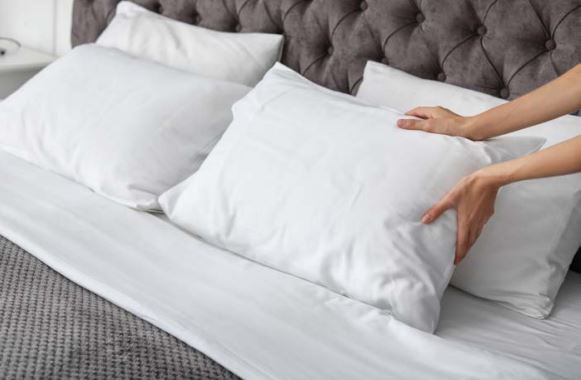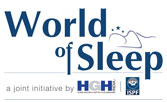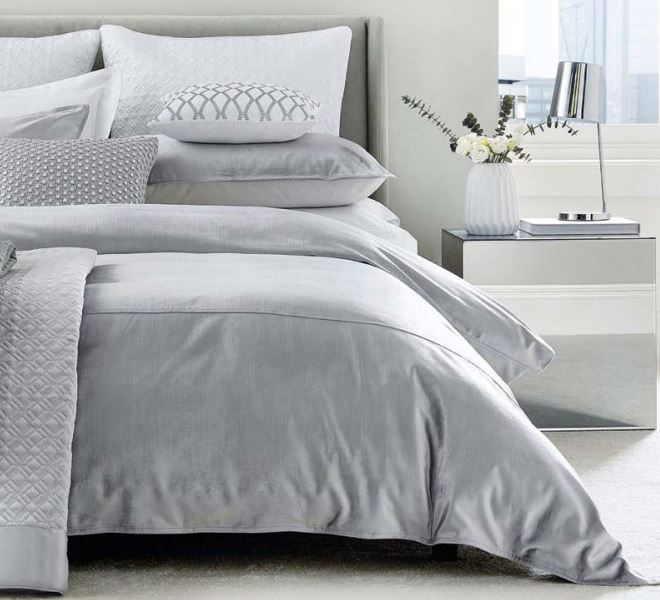Mr Abraham Pious owns and runs a mattress retail store in Bangalore and Cochin area each, part of a 43-year-old family business. The store’s persuasive name ‘Mattress at Bangalore’ is indicative of his simple and coherent style of speaking. He comments, “A few years back had you called me asking questions about ‘mattress accessories’ I would have gone blank for a second.” Abraham sure has a sense of humour but let his words linger a minute more and they’ll make absolute sense.
Mattress accessories have been around for a long time now. In fact, vintage bed skirts are popular collectables
lately. It is widely believed that they serve only the purpose of beautification by hiding the legs of the bedframe and enhancing the allure using chic prints and laces. But was any object ever made without a utilitarian purpose? A heavy
bed skirt that touches the floor helps prevent dust and mites from building up underneath the bed and ensures sleep
hygiene and longevity.
Thence it is our perspective that has changed. It is not that Mr Abhraham has recently started selling pillows or bed
sheets. Sure there are some products like mattress pads that have only started to gain prevalence now. But the point
is that we have started to see mattress accessories in a new light, resulting in the metamorphosis of the term itself.
Part of the sum :
We no more see accessories as an “add-on”. They are seen as part of the larger bedroom environment. Every piece plays its role in optimising sleep quality and thus contributes to better sleep health. People are taking their sleep health seriously and this awareness has translated into action.
They are more willing to spend on things that guarantee better sleep quality. This has been one of the main driving
factors behind the boost in the mattress accessories market. Not just that, customers’ keen interest and demand for personalised solutions is driving the pace of technological innovation too
Value addition to the quality of life :
Deep down it is our values, philosophies and goals that motivate us to buy or use something. For any industry, it
is crucial to understand their clientele’s motivators. The pandemic years have shaken up people to review their
lifestyles. Many don’t want things for their bare minimum utilitarian aspect. The threshold has been raised. Every
product and service is being asked how it adds value to their quality of life.
This comes as good news for the bedding industry. Mattresses and accessories are finally receiving the attention
they deserve. Customers now seek not only comfort but physical health benefits in their mattresses and accessories.
These benefits stem from having a sleep experience that restores the body to its most optimal health.
Cervical pillows and lumbar support pillows are gaining much momentum globally, especially since the development of the work-from-home niche. Mattress covers are another in-vogue accessory. Customers are now more concerned about what is inside their mattress and accessories, in order to protect their own wellbeing as well that of the environment.
Market Overview: Numbers run the game
Global: A market analysis report by Grand View Research states that the global home bedding market size was valued at USD 87.05 billion in 2021 and is expected to expand at a CAGR of 7.9 percent from 2022 to 2030. The boom in the housing sector and growing consumer spending on home furnishings have expanded the growth scenario for the market
Asia Pacific (APAC) accounted for the largest share of over 35.0 percent in 2021 and is expected to witness the fastest growth over the forecast period. The command of the home textile market in the region (China, India, and Japan) has resulted in the wide availability of bedding textiles, thereby expanding the prevalence of bedding products in the residential and commercial sectors.
Further, segment-based analysis shows that bed linens raised the largest revenue share of about 25.0 percent in
2021 and is expected to grow further over the forecast period. Consumer preferences towards quality and
sustainable linens for healthier beds, greater comfort, and durability is a key factors in the segment’s growth. Another notable number would be the CAGR of 7.9 percent at which the blankets segment is expected to grow. The offline distribution channel held the largest revenue share of over 65.0 percent in 2021.
India: Let’s zoom in on the Indian bedding market with the help of the market analysis provided by Statista. The revenue
in the bedding segment amounted to USD 776.70 million in 2022. The market is expected to grow annually by 8.34
percent (CAGR 2022-2026).
Key companies profiled in the report include The Bombay Dyeing & Manufacturing Company Ltd. (Wadia Group), Casper Sleep, Inc., Beaumont & Brown Ltd., Boll & Branch LLC, Crane & Canopy, Inc., American Textile Company, Acton & Acton Limited, West Point Home LLC (Icahn Enterprises L.P.), Kingsdown, Inc., and Portico, Inc.

Drivers & Trends :
Premium bedding items with their enhanced functional benefits, are acting as key drivers in the industry’s improved
performance. In addition, the critical link between good sleep and a healthy mind and body has increased the need for
high-quality mattress accessories.
Pillows are seeing sustained attention and growth, resulting in a fast-paced advancement in their technology too. Cervical pillows and lumbar support pillows are gaining much momentum globally, especially since the development
of the work-from-home niche. Mattress covers are another in-vogue accessory. As people pour more money into high-quality mattresses, they are willing to spend a bit more to ensure their longevity and care through the use of mattress
covers.
Scope & Trends :
Work from bed: All the time spent at home during the lockdowns propelled people to invest in better and premium
home bedding products. Work from home shifted to work from bed real quick and so did the bedding market trends.
Along with the mattresses, accessories like adjustable bases and back supporting pillows have found surged popularity
post-2020.
Fabrics fascinate: Mattress fabrics can help to keep the sleeping surface clean and hygienic, and suppliers are looking
at increasing options with antibacterial, antimicrobial, anti-allergen and similar properties. Fabrics made of organic cotton, Tencel (fibres from trees) and bamboo from rayon have found wider admiration. Recent sustainable
introductions include fabrics crafted with yarns made of “upcycled” plastics.
Sustainability & luxury pricing: Customers are now more concerned about what is inside their mattresses and
accessories, in order to protect their own well-being as well as that of the environment. The sustainability angle helps
rationalise the higher price point, thus the correlation between luxury sleep products and the sustainability benefits they offer is growing.
Pillows crop up: Earlier both retailers and industrialists would see pillows as an “add-on” thing on mattress purchases. Many were just given away for free. Now the pillow is carving out a strong market for itself outside of the luxury segment too. Brands are willingly venturing into the accessory segment. For example, Sleepyhead now offers
soft microfiber pillows at reasonable pricing that provide an adequate neck support.
Real-time effect: The larger sleep health environment has As togetherness and context become increasingly important trends for both society and industry, through its Color Direction 2021, Milliken & Company has embraced colours and textures that complement each other to reflect these vital values.
Mattress accessories can range from functional to fashionable, and include mattress covers, bed skirts, mattress pads, wheels, pillows that prop up certain parts of the body and dozens other types
been expanding, with different segments aiding each other’s growth. People now have access to wearable devices like
Fit Bit enables real-time monitoring. You could buy a new pillow or blanket and see for yourself the way it has altered your sleep without much hassle. This gives the accessories factual backing.
Brands Rising to the Occasion: Mattress accessories are being seen for their potential. Brands are pouring in to not
just use them as an aid for mattress sales but establish a market share of their own. Sleepyhead is one of the brands that’s been escalating its efforts to capitalise on the mattress accessories segment.
The direction in which we pour our time, money and efforts into R&D says a lot about the future we’re expecting or
hoping to create. Let’s have a look at some of the market’s latest and most fascinating technology and innovation to understand where the mattress accessory market is headed.
Innovations: a peek into the future
The OwlzzZ Sleep Mask creates a total blackout over the eyes. It has a 3D memory foam that lets you open your eyes
while still wearing it.
Performance Fabric: Taking the term “performance fabric” to heart, BekaertDeslee has unveiled its Nightro collection of technical fabrics. These fabrics provide better recovery during nighttime for enhanced sports performance and have been developed with athletes preparing for the Olympic Games.
EDASI all-season BioGraphene: The sheets keep the sleeper cool all year long since they wick moisture and don’t
absorb smells. They’re also antimicrobial, antibacterial, and hypoallergenic.
DozzyCozy AirCozy: It is a smart pillow that can keep you from tossing and turning. It has an integrated white noise
function.
Curfew Dream Blanket: The blanket is infused with broad-spectrum CBD oil, believed to reduce anxiety and induce
relaxation.
Hospitology Sleep Defense mattress encasement It is a waterproof zipped mattress protector that promises to safeguard against dust mites, spillages and allergies.
Retailers’ POV
The Sum Total: How a retailer thinks about protectors, linens and other sleep accessories can be a good indicator of how much revenue they generate. An after-thought? An add-on? A freebie? If they believe a mattress set is only one part of a complete sleep system that also includes protectors, linens and other items, they can help customers see the same. Selling sleep accessories nudges the consumers to frequent the stores more often and also increases margins.
An Early Introduction: To successfully sell sleep accessories one has to introduce them early in the process, long before shoppers arrive at the sales counter and make their final mattress selection. But it is also crucial to find the balance and not overwhelm them with jargon. Mr Abraham from Mattress at Bangalore store swears by this technique and trains his sales executive for the same.


